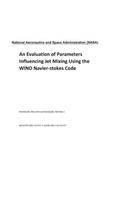
An Evaluation of Parameters Influencing Jet Mixing Using the Wind Navier-Stokes Code
Series:
The WIND code, a Reynolds-averaged Navier-Stokes solver used for a variety of aerospace flow simulations, was investigated for a Mach 2 nozzle at a series of nozzle stagnation temperatures. Comparisons of WIND calculations are made to experimental measurements of axial velocity, Mach number, and stagnation temperature along the jet centerline. The primary objective was to investigate the capabilit
NaN
VOLUME
English
Paperback

The WIND code, a Reynolds-averaged Navier-Stokes solver used for a variety of aerospace flow simulations, was investigated for a Mach 2 nozzle at a series of nozzle stagnation temperatures. Comparisons of WIND calculations are made to experimental measurements of axial velocity, Mach number, and stagnation temperature along the jet centerline. The primary objective was to investigate the capabilities of the two-equation turbulence models available in WIND, version 4.0, for the analysis of heated supersonic nozzle flows. The models examined were the Menter Shear Stress Transport (SST) model and the Chien k-epsilon model, with and without the compressibility correction due to Sarkar. It was observed that all of the turbulence models investigated produced solutions that did not agree well with the experimental measurements. The effects of freestream Mach number and turbulent Prandtl number specifications were also investigated. Dembowski, Mary Ann and Georgiadis, Nicholas J. Glenn Research Center NASA/TM-2002-211727, E-13478, NAS 1.15:211727
Price Comparison [India]
In This Series
Bestseller Manga
Trending NEWS




















